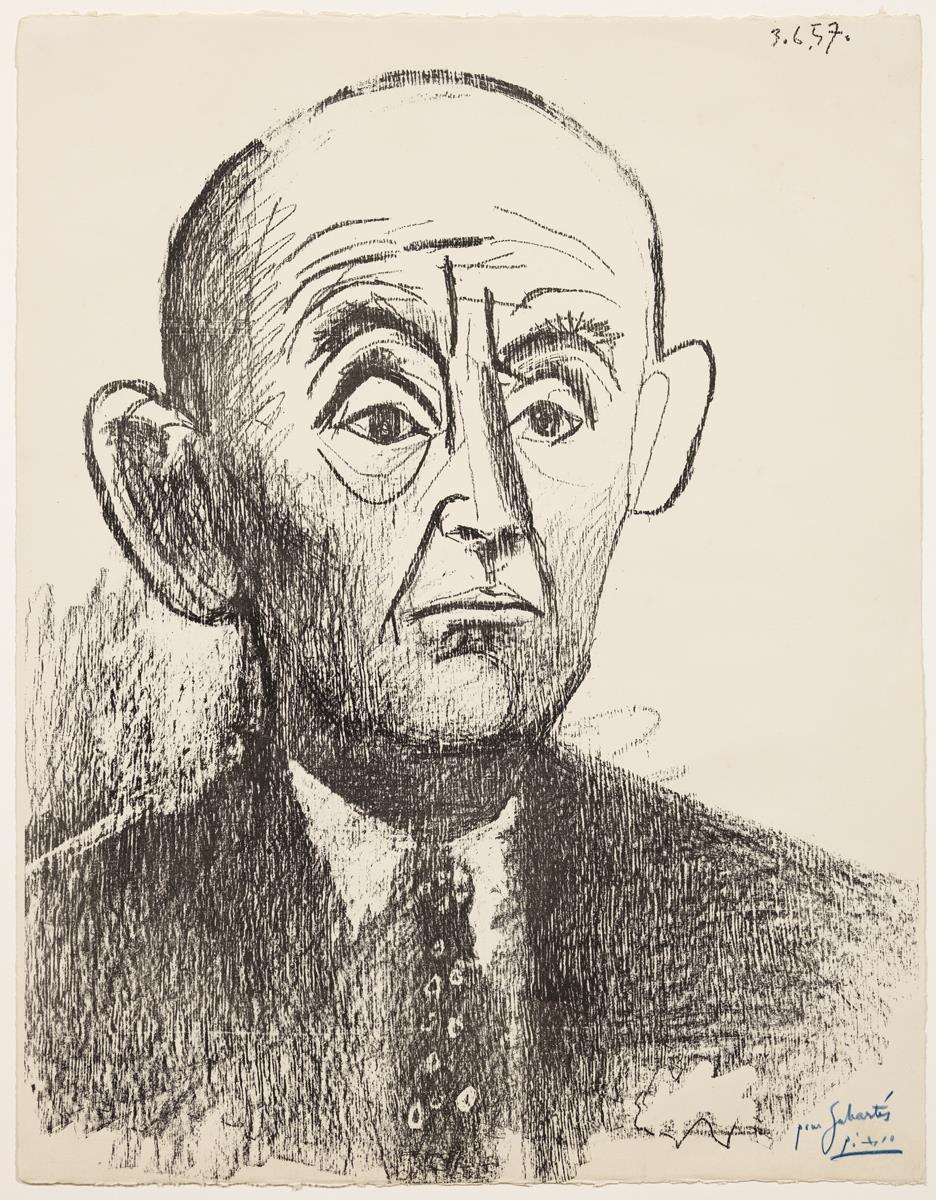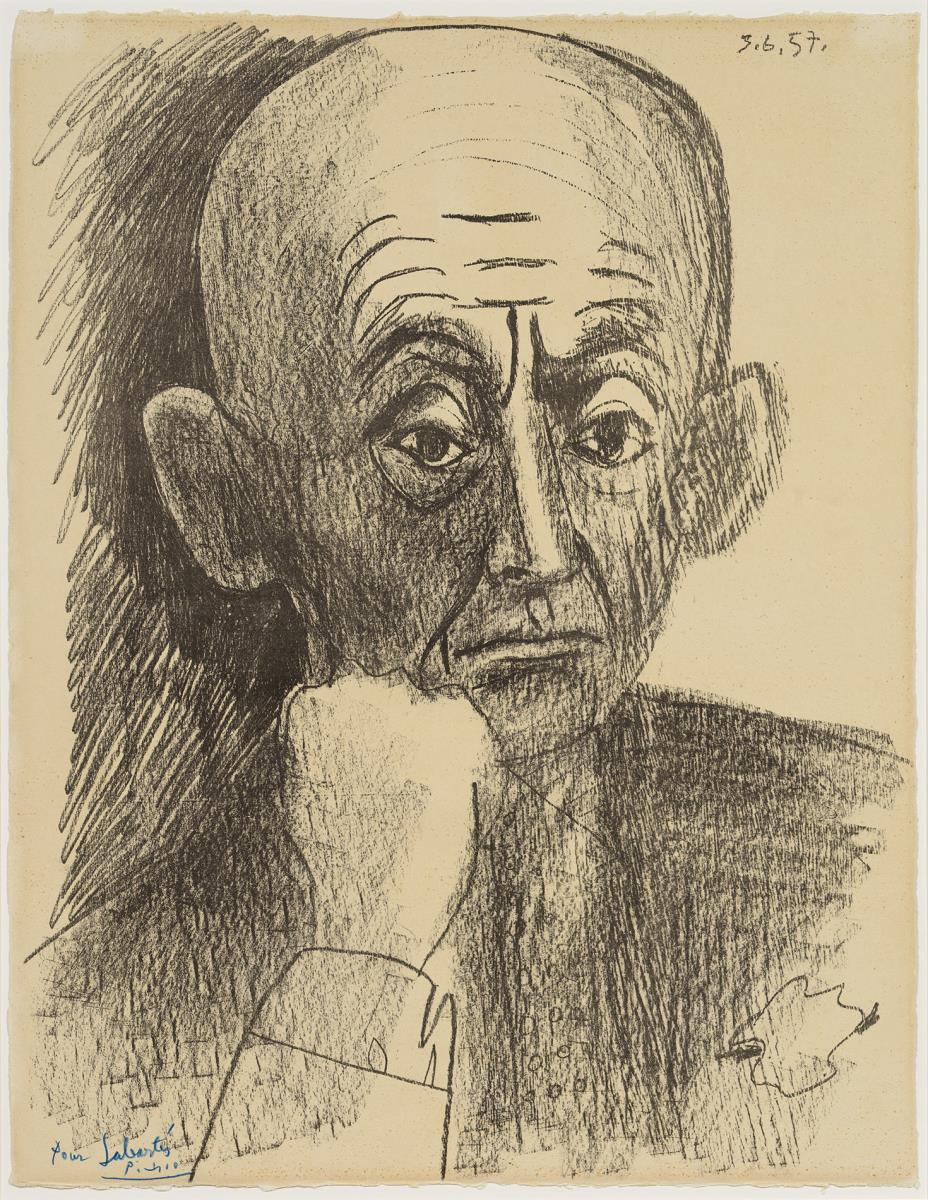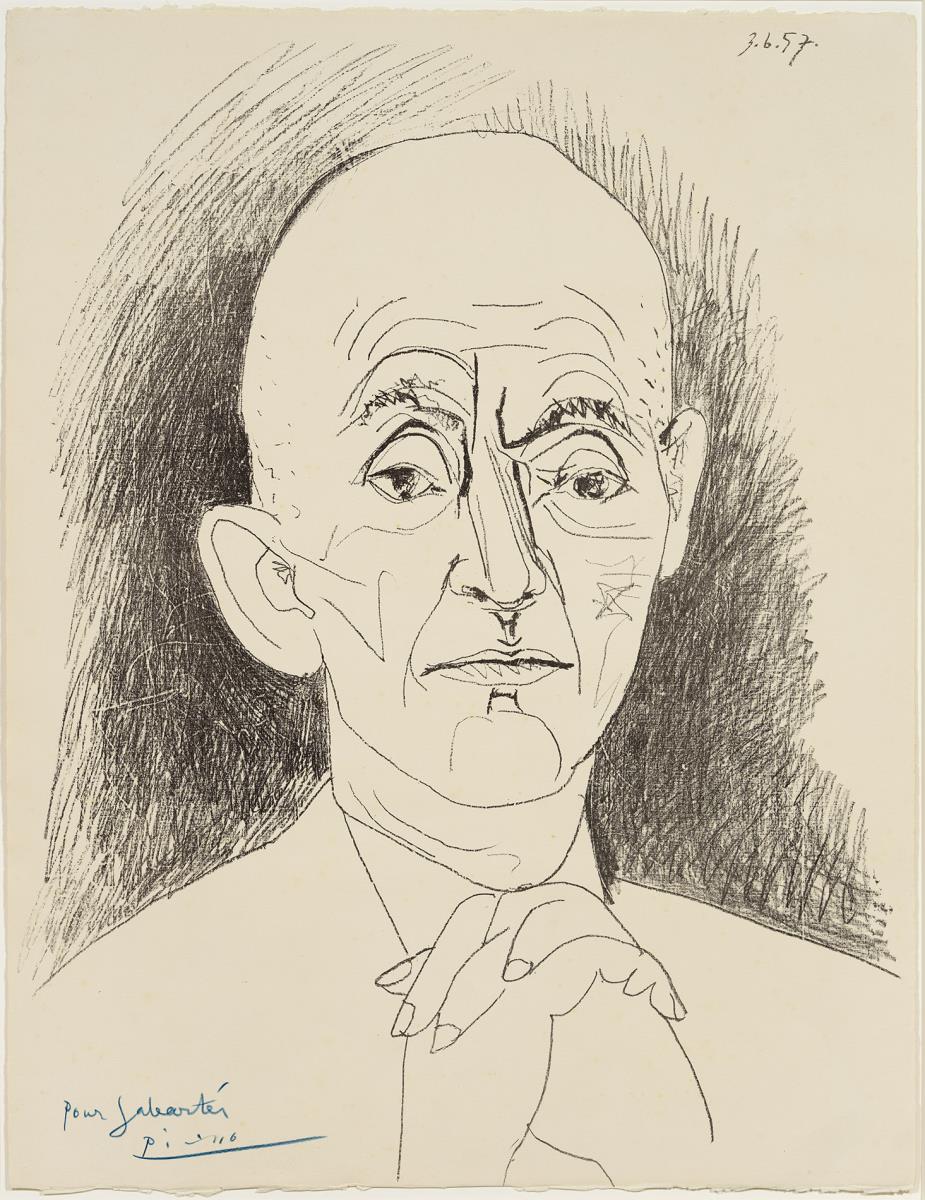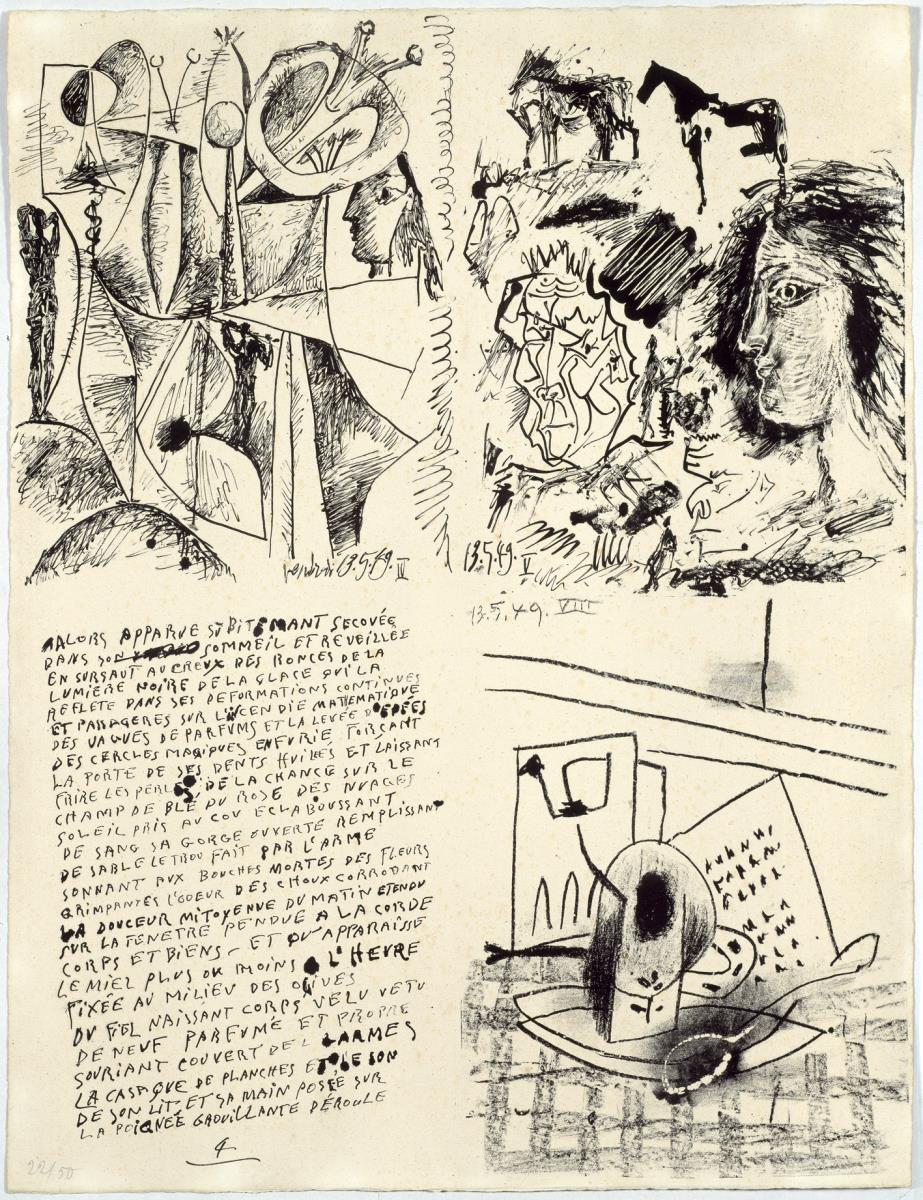
Daniel-Henry Kahnweiler: dealer and publisher

KAHNWEILER, A MAN OF ART
Daniel-Henry Kahnweiler was one of the most important art dealers of the 20th century. His name has forever been linked to the history of cubism. He was the first promoter, since from 1908 he presented Georges Braque, Pablo Picasso, Juan Gris and Fernand Léger in his Parisian gallery. He was also the best witness, the first historian and the first publisher. Kahnweiler suffered harshly the attacks of history, which in 1914 deprived this German pacifist and Jewish art dealer of his collection and in 1940 stripped him of all his property. He would remain faithful throughout his life to an intellectual and moral ethic that gave a particular tone to the exchanges he had with his artists. A man of convictions and with a deep sense of duty, he was the protector and collector of all the artists he presented in the three galleries he successively managed, the one bearing his name, the Galerie Simon and the Galerie Louise Leiris. Rejecting any unitary line, but hostile to abstraction, he considered painting as an intelligible writing of the world, animated by a poetic feeling. Kahnweiler, indifferent to the fashions and dogmas of his time, placed Picasso, "the shock of his life", at the top of everything.
«My little gallery»
Room 1
In 1907, Kahnweiler opened his first gallery in the centre of Paris, in a tiny space of 16m². Active until 1914, this gallery became legendary when it became a temple of cubism. In 1908, Kahnweiler, who already knew Derain, Vlaminck and Picasso, put on the "Georges Braque" exhibition there, with a catalogue prefaced by Apollinaire. Given the post-Cézanne geometry of Braque's landscapes, the critic Louis Vauxcelles described them as "little cubes". The word cubism was born. In the gallery, four artists embodied the movement: Braque, Gris, Léger and Picasso. The first customers - the French Roger Dutilleul, the Swiss Hermann Rupf, the Russian Serguei Shxukin and the Czech Vincenc Kramářli conferred an international aura. In 1909, the publication of Apollinaire's L'Enchanteur pourrissant [The Rotten Enchanter], illustrated by Derain, marked the beginning of the Kahnweiler publications and completed the cubist representation of the art dealer.
Kahnweiler, publisher
Room 2
Parallel to his activity as an art dealer, from 1909, Kahnweiler started out in luxury publishing. However, instead of publishing a text by an ancient author illustrated by a modern illustrator, as was customary in the world of bibliophilia, Kahnweiler decided to have poets and artists of the same generation work together. The texts chosen were almost always original editions. Thus, the poets and writers Guillaume Apollinaire, Max Jacob, André Malraux, Antonin Artaud, Raymond Radiguet, Georges Limbour and Michel Leiris, authors who shared a certain taste for fantasy and biting humour, sometimes with dark touches, published their first book with Kahnweiler. It was also with Kahnweiler that Picasso, Laurens, Lascaux, Manolo and Masson started illustrating books for the first time. The relationship between text and image in these publications is often complex: the artist never illustrates the text in a servile way. It is rather a dialogue, more or less close, between two creative universes.
 |
 |
Illustrated book. Kahnweiler Gallery editions. Lune en papier, 1921 Text by André Malraux and 6 woodcuts by Fernand Léger printed by Paul Birault 40 pages. Print run of 100 numbered copies. © Fernand Léger, VEGAP, Barcelona, 2022 Photography by Thierry Jacob Sophie and Emmanuel Boussard Library
Juan Gris and Henri Laurens
Room 3
Kahnweiler, back in Paris after his exile in Switzerland, opened the Galerie Simon in 1920, much more spacious than the first, which took the name of his partner, André Simon. After the war, Kahnweiler had to start from scratch. Between 1921 and 1923, the works of the historic gallery were confiscated by the French state as "enemy property" and were auctioned, and Derain, Braque, Léger, Picasso and Vlaminck signed contracts with other art dealers. Of the pioneers of the historic gallery, only Gris returned quickly with Kahnweiler, and even in 1922 he settled in his own neighbourhood, Boulogne, on the outskirts, to the west of Paris. A deep friendship was born between them, and they saw each other every day until the painter's untimely death in 1927. During this period, Gris painted canvases with full, dense forms, structured like bas-reliefs: pictures that reflect the idea of "flat and colourful architecture" that Gris developed in 1924 during a conference. The text was reproduced in 1946 by Kahnweiler in the important monograph he dedicated to the artist.
To compensate for the departure of Kahnweiler's historical artists, the Galerie Simon was opened to other artists. Among the Cubists, Kahnweiler included a close friend of Braque, the sculptor Henri Laurens, whose work he discovered in 1920 in Geneva at an exhibition organised by Léonce Rosenberg. The two became immediate friends. Laurens created his first Cubist assemblages and collages with complex amalgams beginning in 1915. In the early 1920s, his sculptures took on a more classicising appearance, with figures emerging from compact blocks with angular edges (The woman from the orchard, 1921). Later, Laurens' production turned towards more massive forms, as in the Cariatide of 1930. Kahnweiler saw Laurens as the continuation of "the French tradition of Jean Goujon", the great master of French Renaissance sculpture. The three sculptures on display are among the artist's many works that have decorated the rooms and garden of Kahnweiler's country house in Saint-Hilaire, south of Paris.
Kahnweiler i les seves xarxes internacionals
Room 4
«I have had the immense joy of witnessing my own execution for the second time», Kahnweiler wrote to his friend and loyal client Wilhelm Uhde on the occasion of the second sale of his gallery's collection in 1921. The works, requisitioned in 1914 as «enemy goods», were auctioned by the French State as part of the reparations that were imposed on Germany after the First World War. More than a thousand works were thus auctioned in four sales that took place between 1921 and 1923. Léonce Rosenberg, who had hired some artists from the Kahnweiler gallery during the war, was designated as an auction expert and he was in charge of supervising the printing of the sales catalogues, illustrated with many reproductions. The sales record was achieved by Derain's Portrait of Lucie Kahnweiler (1913), which was acquired by Paul Rosenberg, Léonce's brother. Ironically, these auctions, which Kahnweiler tried to cancel by all possible means, can be considered the first great exhibition of Cubism, since they contributed greatly to consolidating the legitimacy of the artists and their art dealer.
The sales of the confiscated goods of Kahnweiler (1921-1923)
Sala 4
«I have had the immense joy of witnessing my own execution for the second time», Kahnweiler wrote to his friend and loyal client Wilhelm Uhde on the occasion of the second sale of his gallery's collection in 1921. The works, requisitioned in 1914 as «enemy goods», were auctioned by the French State as part of the reparations that were imposed on Germany after the First World War. More than a thousand works were thus auctioned in four sales that took place between 1921 and 1923. Léonce Rosenberg, who had hired some artists from the Kahnweiler gallery during the war, was designated as an auction expert and he was in charge of supervising the printing of the sales catalogues, illustrated with many reproductions. The sales record was achieved by Derain's Portrait of Lucie Kahnweiler (1913), which was acquired by Paul Rosenberg, Léonce's brother. Ironically, these auctions, which Kahnweiler tried to cancel by all possible means, can be considered the first great exhibition of Cubism, since they contributed greatly to consolidating the legitimacy of the artists and their art dealer.
Paul Klee and Gaston Louis Roux
Room 4
In 1912, during a stay in Paris, the Swiss artist Paul Klee discovered the Kahnweiler gallery and cubist painting. The common taste for music, poetry and philosophy, as well as a shared friendship with the collector Hermann Rupf and Kahnweiler's forced exile in Switzerland during the First World War laid the foundations for a solid relationship between the artist and the art dealer. The singularity of Klee's work, neither cubist nor surrealist, kept him away, however, from the Parisian exhibition rooms, and his later work was not exhibited until 1934 at Kahnweiler's residence and until 1938 at the Galerie Simon.
Another independent artist, Gaston Louis Roux, had a close relationship with Michel Leiris, who he accompanied on the «Dakar-Djibouti» mission in 1931. The Fall of Icarus, from 1929, represents the best of an eclectic body of work, which oscillates between figuration and abstraction, cubism and surrealism, and which had the support of Kahnweiler, with interruptions, between 1927 and 1947.
Georges Braque and Fernand Léger
Room 5
Two men of different temperaments and aesthetics, Braque, the «cubist», and Léger, the «tubist», had the support of Kahnweiler from very early on, with whom he signed an exclusive contract from 1912. The Great War, which mobilised the artists and led to the exile of the art dealer, separating them, but the sales of the years 1921-1923, which dispersed the collection of the Kahnweiler gallery, renewed their friendship. If Braque's still lifes from the 1920s, which Kahnweiler bought back from his competitor Léonce Rosenberg, are proof of his fidelity to Cubism, which evolved into a more figurative form, Léger's contemporary compositions are completely detached from it. Faced with the austere intimacy of Braque, Léger opted for the strongly colourful energy of an urban world where cylindrical figures and objects, with their metallic glow, are swept away by the same dynamism.
André Masson
Room 6
In 1922, the writer Michel Leiris, Kahnweiler's future son-in-law, wrote in his diary: "André Masson is, along with Picasso, the greatest living painter of this era". In the same period, Masson was visited by Kahnweiler, who immediately offered him a contract, marking the beginning of decades of collaboration and friendship. The art dealer perceived in Masson's compositions from the early 1920s the persistence of Cubism, to which the artist conferred a new symbolic aura (The Four Elements, Man in an Interior, both from 1923-1924), while his landscapes from the same period recall those previously painted by Derain (La clariana, 1922). Close for a while to the group of surrealists that formed around the poet André Breton from 1924, he gradually distanced himself from it, which greatly relieved Kahnweiler, who did not appreciate surrealist painting at all. The stay in Catalonia, and in particular in Tossa de Mar (1934-1936), marked for a long time Masson's works, among which scenes of massacres, bullfights or insect fights abound (Summer enjoyment, 1934). From 1945 he was, along with Picasso, the main artist represented by the Galerie Louise Leiris.
Sundays in Boulogne
Room 7
«We danced to the sound of a phonograph brought by Gris, in winter in the hall and in summer in the garden! There was a constant coming and going between the two houses. We used to go up the stairs of Gris to see his latest canvases. Afterwards, we chatted, played, sang...! » The book that Kahnweiler dedicated to Gris in 1946 evokes with emotion the meetings in which, in the 1920s, they met every Sunday in Boulogne, near Paris, at the home of Kahnweiler and Gris, the regulars of the gallery: artists, musicians, poets, critics and their families. Ghosts of a bygone happy era, the pieces of Boulogne furniture shown in the exhibition bear witness to the spirit of generosity and brotherhood that Kahnweiler instilled in his relationships with artists. For his family ties with the Kahnweiler clan (he was married to Berthe Godon, one of Lucie Kahnweiler's sisters), for his painting, with an intense dreamlike sensibility, and for his bohemian personality, Élie Lascaux was destined to be one of the most outstanding figures of those «Sundays in Boulogne».
Josep de Togores
Room 8
Josep de Togores settled in Paris in 1919, just when his name was starting to emerge in Barcelona, pushed mainly by the hardships his family was going through. Very soon he frequented the artistic and intellectual settings, where, among others, he met the painters Juan Gris and Amedeo Modigliani and the poet Max Jacob, with whom he established a great friendship. The canvases that he painted in the first year of his stay in the French capital, of an almost glacial objectivity, interested Kahnweiler only when he saw them at the end of 1920, when the Galerie Simon had just been inaugurated, so much so that the following February Togores signed an exclusive contract that was supposed to allow him to work without material concerns. In 1922 Kahnweiler trusted Togores to start the gallery's line of individual exhibitions, and for eleven years he supported him in each of the stylistic turns his painting took, promoting him both in Paris and abroad. But when Togores returned from Italy in 1931 with a very simplified and decorative figuration that did not please Kahnweiler at all, he did not have the heart to defend him and chose, despite the friendship that united them, not to renew his contract.
Manolo Hugué
Room 9
The life and artistic career of Manuel Martínez Hugué, better known as Manolo, ran parallel to those of the three Kahnweiler galleries from the moment in 1912 when he offered him a first exclusivity contract that allowed him to focus on his sculptural work. A friend of Picasso from his years in Barcelona, with whom he shared Parisian bohemia from 1901 onwards, in 1910 he settled in Céret and was one of the promoters of what would become the «Mecca of Cubism», as André Salmon would call it. The relationship between Kahnweiler and Manolo, who until 1920 was the only sculptor whom the art dealer represented, was marked by strong bonds of friendship despite the constant tug-of-war in their commercial relationship, and transcended the death of the sculptor, given that Kahnweiler maintained friendship with his widow, Totote, and his daughter, Rosa. Despite the fact that the economic crisis had forced Kahnweiler to break the relationship with Manolo in 1933, he never stopped spreading his work by means of the organisation and holding of his exhibitions around the world.
André Beaudin, Francisco Bores, Eugène de Kermadec and Suzanne Roger
Room 10
«Within the structure discovered by Cubism, the young painters introduce a new feeling», said Kahnweiler in 1927, referring to the new generation of artists he championed at the Galerie Simon. In the works of André Beaudin, Francisco Bores, Eugène de Kermadec and Suzanne Roger, Kahnweiler saw, to varying degrees, the permanence of the brand of Cubism, adapted to each artist's own personality. In Roger's works, where «a dark flame» (in Kahnweiler's words) seems to burn, this predominance of cubism is particularly visible through the tubular characters reminiscent of those of Léger (Chess Players, 1923). Beaudin was, according to Kahnweiler, «the one who best understood [...] the great lesson of Juan Gris". For his part, Kermadec seems to preserve Cubism's concern for structure and the «grid», paradoxically through the use of extremely fluid coloured lines, on the edge of abstraction, a trend that Kahnweiler categorically rejected. The effects of transparency and the juxtapositions of different perspective planes by Bores are also features of Cubism. With the notable exception of Bores, whose contract was not renewed after World War II, these artists regularly exhibited at the Galerie Louise Leiris.
Pablo Picasso
Rooms 10 and 11
Kahnweiler and Picasso. How can this unique relationship between two key figures of the 20th century be summed up? Between 1907, the year they met at the Bateau-Lavoir, and 1973, the year of Picasso's death, they never stopped loving each other, distancing themselves and writing together one of the most transcendental of universal art. In this exchange there were three outstanding moments: firstly, the birth of Cubism, when Picasso, contractually linked with Kahnweiler in 1912, invented unpublished formal codes that Kahnweiler analysed in his books, as in The Rise to Cubism. Later on, in the nineteen thirties, the complicity that was created between Picasso and Michel Leiris, Kahnweiler's son-in-law, and the latter's interest in Picasso's sculpted work revived their relationship. Finally, although they grew apart until 1948, these relationships were consolidated in 1957, when Kahnweiler was once again Picasso's exclusive art dealer. The exhibitions that were presented at the Galerie Louise Leiris at the time revealed the intact power of the later Picasso, which was manifested in the fascinating series of portraits of Jacqueline Roque and the interpretations of Delacroix or Velázquez.








